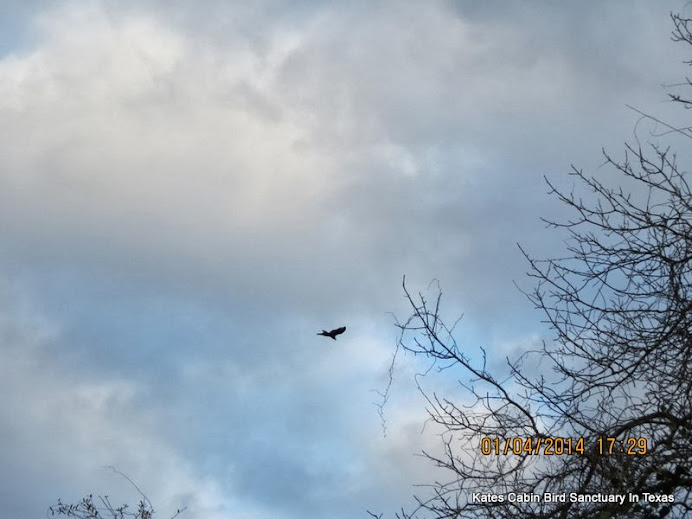
Hi Everybody:
To me the colors of January are black, white and blue. For now the greens are gone. The naked trees make silhouettes against the stark cold sky. The sky seems true blue. What makes the sky blue? It just so happens I shared the answer from Wikipedia below so you all will be in the know, too! Now, what makes the clouds appear white and gray? This answer is more difficult as there is not public knowledge released about the created clouds. In my sky, I can say what determines the cloud colors is chemicals from jets. Have a look at the photostudies and a look at your sky. Maybe you have more questions than answers, also. Makes you wonder. Enjoy!













Highlight Quick Clips and snow created by G+Auto Backup (Thanks Guys!)
Below are the links to the 4 albums in my G+Gallery for the black, white and blue study:
https://plus.google.com/u/0/photos/117645114459863049265/albums/5965462359592405873
https://plus.google.com/u/0/photos/117645114459863049265/albums/5965465623362643601
https://plus.google.com/u/0/photos/117645114459863049265/albums/5965468374799830353
https://plus.google.com/u/0/photos/117645114459863049265/albums/5965471566840164161







https://en.wikipedia.org/wiki/Diffuse_sky_radiation
Diffuse sky radiation
From Wikipedia, the free encyclopedia
Diffuse sky radiation is solar radiation reaching the Earth's surface after having beenscattered from the direct solar beam by molecules or suspensoids in the atmosphere. It is also called skylight, diffuse skylight, or sky radiation and is the reason for changes in the colour of the sky. Of the total light removed from the direct solar beam by scattering in the atmosphere (approximately 25% of the incident radiation when the sun is high in the sky, depending on the amount of dust and haze in the atmosphere), about two-thirds ultimately reaches the earth as diffuse sky radiation.
The important processes in the atmosphere (Rayleigh scattering and Mie scattering) areelastic processes, by which light can be deviated from its path without being absorbed and with no change in wavelength.

A spectrum taken of blue sky clearly showing solar Fraunhofer lines and atmospheric water absorption band.
Color[edit]
The sunlit sky is blue because air scatters short-wavelength light more than longer wavelengths. Since blue light is at the short wavelength end of the visible spectrum, it is more strongly scattered in the atmosphere than long wavelength red light. The result is that the human eye perceives blue when looking toward parts of the sky other than the sun.[1] The color perceived is similar to that obtained by a monochromatic blue of wavelength 474–476 nmmixed with white light, i.e., an unsaturated blue light.[2]
Near sunrise and sunset, most of the light we see comes in nearly tangent to the Earth's surface, so that the light's path through the atmosphere is so long that much of the blue and even green light is scattered out, leaving the sun rays and the clouds it illuminates red. Therefore, when looking at the sunset and sunrise, you will see the color red more than any of the other colors.
Scattering and absorption are major causes of the attenuation of radiation by the atmosphere. Scattering varies as a function of the ratio of the particle diameter to the wavelength of the radiation. When this ratio is less than about one-tenth, Rayleigh scattering occurs in which the scattering coefficient varies inversely as the fourth power of the wavelength. At larger values of the ratio of particle diameter to wavelength, the scattering varies in a complex fashion described, for spherical particles, by the Mie theory; at a ratio of the order of 10, the laws of geometric optics begin to apply.
Neutral points[edit]
There are three commonly detectable points of zero polarization of diffuse sky radiation (known as neutral points) lying along the vertical circle through the sun.
- The Arago point, named after its discoverer, is customarily located at about 20° above the antisolar point; but it lies at higher altitudes in turbid air. The latter property makes the Arago distance a useful measure of atmospheric turbidity.
- The Babinet point, discovered by Babinet in 1840, is located about 15° to 20° above the sun, hence it is difficult to observe because of solar glare.
- The Brewster point, discovered by Brewster in 1840, is located about 15° to 20° below the sun; hence it is difficult to observe because of solar glare.
Under an overcast sky[edit]
There is essentially no direct sunlight under an overcast sky, so all light is then diffuse sky radiation. The flux of light is not very wavelength dependent because the cloud droplets are larger than the light's wavelength and scatter all colors approximately equally. The light passes through the translucent clouds in a manner similar to frosted glass. The intensity ranges (roughly) from 1⁄6 of direct sunlight for relatively thin clouds down to 1⁄1000 of direct sunlight under the extreme of thickest storm clouds[citation needed].









...this is brendasue signing off from Rainbow Creek. See You next time! Keep an eye to the sky!

O+O



No comments:
Post a Comment
Hi Everybody! Please say hello and follow so I know you are here! Due to the inconsideration of people trying to put commercials on my blog comment area, I have restricted use of anonymous posts. Sorry that some hurt all.
My public email is katescabin@gmail.com No spammers or trolls